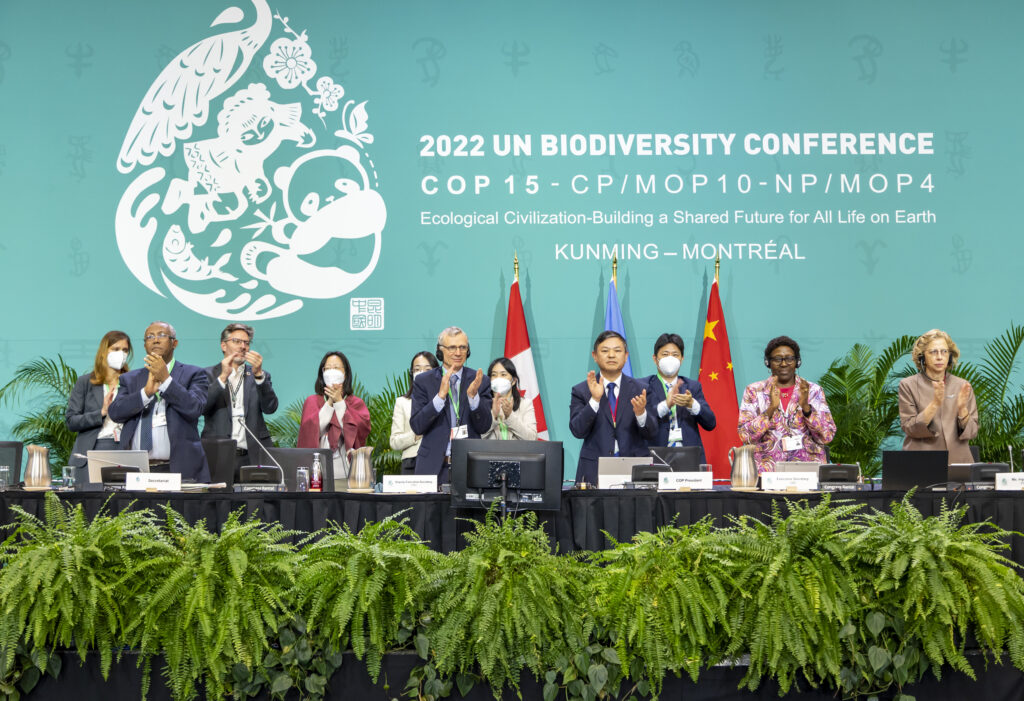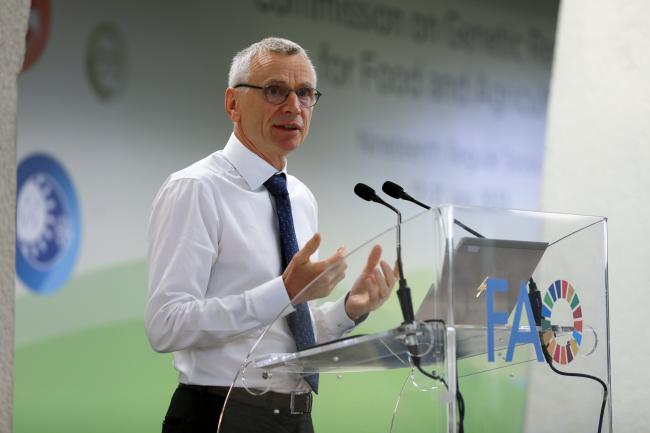The strategy to mobilise resources in support of biodiversity action across the world, was advanced on Monday with the opening of the first meeting of the
Advisory Committee on Resource Mobilization, held in the Democratic Republic of the Congo.
The Advisory Committee on Resource Mobilization was established by governments at COP 15, in Montreal in December 2022 through decision 15/7. The body is meant to support and strengthen the Strategy for Resource Mobilization that supports the achievement of the 4 goals and 23 action targets of the Kunming-Montreal Global Biodiversity Framework. It will also develop recommendations on opportunities to strengthen,
simplify and reform existing financial instruments, and on proposals for a global instrument on biodiversity finance.
The body has representatives from all United Nations regions, indigenous peoples and local communities, civil society, women, youth, business, the financial sector, multilateral development banks, and other international organizations. It will review the biodiversity finance landscape at all levels, its gaps and overlaps, and the opportunities to improve coherence, coordination and synergies. It will also look at potential additional funding sources, including innovative sources, and current proposals for a global instrument on biodiversity finance to mobilize resources from all sources.
The meeting was opened with an announcement by the government of the Democratic Republic of the Congo (DRC) of an innovative instrument for public-private partnerships in support of biodiversity protection in the DRC.
Her Excellency Ève Bazaiba Masudi, minister of Environment of the Democratic Republic of the Congo, said « The Democratic Republic of the Congo (DRC) is proud to welcome the first meeting of the Advisory Committee on Resource Mobilization, to give new energy to the implementation of the Kunming-Montreal Global Biodiversity Framework. The DRC is also proud to announce an innovative public-private partnership to finance biodiversity conservation in the DRC.
David Cooper, Acting Executive Secretary for the Convention on Biological Diversity, said “Madame Minister, your interest in organising this meeting in Kinshasa reflects the importance that your country, and African countries in general, pay to the subject of resource mobilization.”

The meeting reinforces and accelerates recent work in support of resource mobilization for the global Biodiversity Framework including:
– The launch of the Global Biodiversity Framework Fund (GBFF) by the 7th Assembly of the Global Environment Facility (GEF)
– The announcement of over 200 million USD in donations to the fund, including 200 million CAD by the government of Canada, 10 million GBP from the UK, and 40 million euros from Germany.
– The launch of the final recommendations of the Taskforce on Nature-related Financial Disclosures in the margins of the United Nations General Assembly.
The Kunming-Montreal Global Biodiversity Framework’s Target 19 commits the world to increase financial resources to $ 200 billion USD per year, by 2030, including $ 30 billion USD through international finance. It includes a near-term target of raising $ 20 billion USD per year through international finance by 2025.
The plan to be developed in accordance with the advice of the committee, is expected to increase the level of financial resources substantially and progressively from all sources, in an effective, timely and easily accessible manner, including domestic, international, public, and private resources.
A priority will be to find ways to increase total biodiversity-related international financial resources from developed countries, including official development assistance, and from countries that voluntarily assume obligations of developed country Parties, to developing countries, in particular the least developed countries and small island developing States, as well as countries with economies in transition, to at least $20 billion per year by 2025, and to at least $30 billion per year by 2030.
But the strategy is also expected to significantly increase domestic resource mobilization, facilitated by the preparation and implementation of national biodiversity finance plans or similar instruments according to national needs, priorities and circumstances.
The strategy is also expected to leverage private finance, promote blended finance, implement strategies for raising new and additional resources, and encourage the private sector to invest in biodiversity, including through impact funds and other instruments.
Efforts to stimulate innovative schemes such as payment for ecosystem services, green bonds, biodiversity offsets and credits, and benefit-sharing mechanisms, with environmental and social safeguards are also expected.
Given the intimate linkage between biodiversity loss and the climate crisis, there will also be work done to optimise co-benefits and synergies of finance targeting both.
Place will also be given to enhance the role of collective actions, including by indigenous peoples and local communities, Mother Earth Centric Actions[1] and non-market-based approaches, including community- based natural resource management and civil society cooperation and
solidarity aimed at the conservation of biodiversity.
There will also be efforts to enhance the effectiveness, efficiency and transparency of resource provision and use.
The Advisory Committee will continue to meet virtually over the course of the year and will meet again in-person in 2024. Its recommendations will be taken up by governments at COP 16, scheduled for the end of 2024, and will shape the way forward for mobilization of resources in support of the Kunming-Montreal Global Biodiversity Framework.

